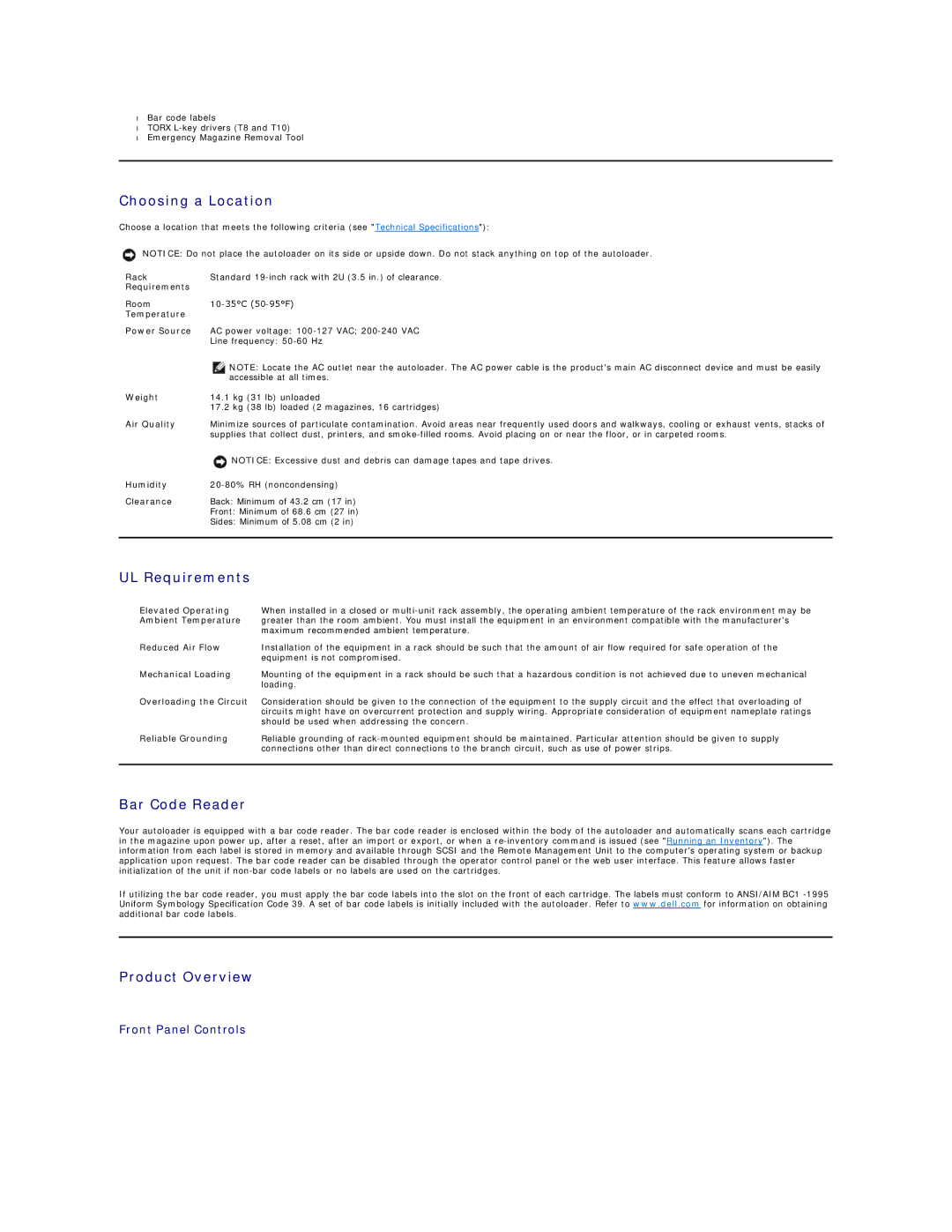
•Bar code labels
•TORX
•Emergency Magazine Removal Tool
Choosing a Location
Choose a location that meets the following criteria (see "Technical Specifications"):
NOTICE: Do not place the autoloader on its side or upside down. Do not stack anything on top of the autoloader.
Rack | Standard |
Requirements |
|
Room | |
Temperature |
|
Power Source | AC power voltage: |
| Line frequency: |
| NOTE: Locate the AC outlet near the autoloader. The AC power cable is the product's main AC disconnect device and must be easily |
| accessible at all times. |
Weight | 14.1 kg (31 lb) unloaded |
| 17.2 kg (38 lb) loaded (2 magazines, 16 cartridges) |
Air Quality | Minimize sources of particulate contamination. Avoid areas near frequently used doors and walkways, cooling or exhaust vents, stacks of |
| supplies that collect dust, printers, and |
| NOTICE: Excessive dust and debris can damage tapes and tape drives. |
Humidity | |
Clearance | Back: Minimum of 43.2 cm (17 in) |
| Front: Minimum of 68.6 cm (27 in) |
| Sides: Minimum of 5.08 cm (2 in) |
|
|
UL Requirements
Elevated Operating | When installed in a closed or |
Ambient Temperature | greater than the room ambient. You must install the equipment in an environment compatible with the manufacturer's |
| maximum recommended ambient temperature. |
Reduced Air Flow | Installation of the equipment in a rack should be such that the amount of air flow required for safe operation of the |
| equipment is not compromised. |
Mechanical Loading | Mounting of the equipment in a rack should be such that a hazardous condition is not achieved due to uneven mechanical |
| loading. |
Overloading the Circuit Consideration should be given to the connection of the equipment to the supply circuit and the effect that overloading of circuits might have on overcurrent protection and supply wiring. Appropriate consideration of equipment nameplate ratings should be used when addressing the concern.
Reliable Grounding Reliable grounding of
Bar Code Reader
Your autoloader is equipped with a bar code reader. The bar code reader is enclosed within the body of the autoloader and automatically scans each cartridge in the magazine upon power up, after a reset, after an import or export, or when a
If utilizing the bar code reader, you must apply the bar code labels into the slot on the front of each cartridge. The labels must conform to ANSI/AIM BC1
